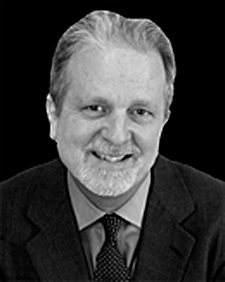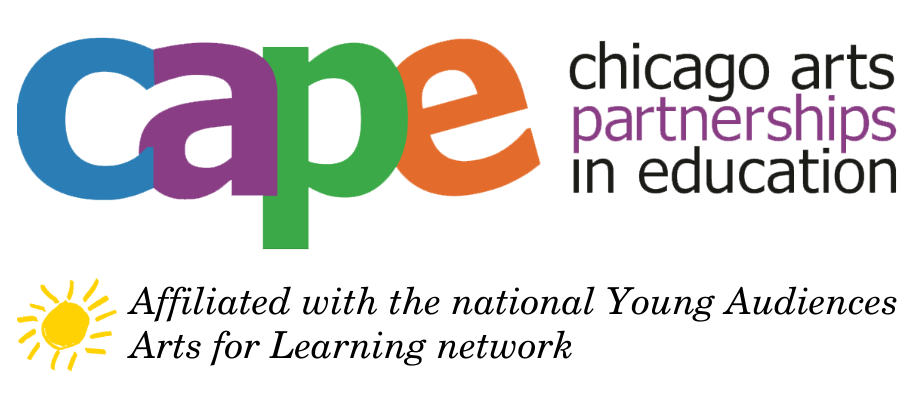PAIR Research Methodology
The PAIR research encompassed four years of design, implementation and analysis.The Research and Program teams set forward on a process that would pinpoint, develop, and capture multiple sources of data for teaching and learning, in order to more fully put together the puzzle between the two pieces we knew we would have—standardized test scores and completed student art works. Over the course of planning, several principles set the foundation for how we would direct this research process:
Research is participatory and collaborative.
Our lead researchers worked closely with CAPE program staff, PAIR teachers and teaching artists to create research tools. Without this collaborative process, we would not have been able to accurately measure goals of the program.
Links between professional development, teacher impact and student learning must be established.
Finding the relationship, qualitatively and quantitatively, between teacher professional development impact and student learning was recurring topic of discussion. We knew that if we did not determine the relationship between these factors, the case to be made for this kind of program would be weakened. This focus brought together our researchers, and challenged us to think of different tools and analyses to more effectively communicate the impact of this work.
Standardized test scores cannot be the only measure of student learning.
Like many individuals and organizations working in this field, we know that standardized test scores do not account for the dimensions of learning that take place through this work. We agreed early on that this was not acceptable, and we had to create, and make reliable additional tools.
The types of data we collected for analyses are below. Each tool was designed or adapted specifically for this program:
- Teacher end of year survey
- Teacher Professional Development surveys
- Teachers Classroom documentation (including their written reflection and student work artifacts)
- Student surveys
- Snapshot of Arts Integrated Learning student interview
- Illinois Standards Achievement Test (ISAT) Academic Performance
- Student and Teacher portfolio conferences
We included in our analysis other programmatic-based variables such as teacher years of participation in PAIR, teacher professional development attendance, student years of participation in PAIR, and types of schools involved. These variables became critical lenses through which data sifted and often framed the analyses.
For CAPE going forward, it is critical to maintain the integrity of research. What does this mean? It means embracing the challenge of a full and complex research approach, including determining extensive data sources, innovating methods and tools to gather that data, and taking on the deep challenge of bridging that data to arrive at larger understandings and new questions. It means knowing that authentic research is taking the risk that you may not always see positive program results. Finally, it means working from a growing belief in the intrinsic, back-and-forth relationship of doing research, teaching, and art making.
PAIR Quick Links:
PAIR Home | The Project | The Outcomes | The Research | Action Items
Downloads
Click any of the titles below to download a PDF or visit the external link.
Embracing the Burden of Proof, an article about PAIR published in the Journal for Learning Through the Arts” 10 (1) (2014) (external link)
PAIR Lead Researcher: Dr. Gail Burnaford
 Dr. Gail Burnaford is a Professor in the College of Education’s Department of Curriculum, Culture and Educational Inquiry (CCEI) at Florida Atlantic University where she teaches doctoral and master’s courses in program evaluation, curriculum design and instructional practice and chairs multiple dissertation committees. Prior to this, she was Director of Undergraduate Teacher Education at Northwestern University and taught in the Master of Science in Education Program in the School of Education and Social Policy at NU. She is a former high school English teacher.
Dr. Gail Burnaford is a Professor in the College of Education’s Department of Curriculum, Culture and Educational Inquiry (CCEI) at Florida Atlantic University where she teaches doctoral and master’s courses in program evaluation, curriculum design and instructional practice and chairs multiple dissertation committees. Prior to this, she was Director of Undergraduate Teacher Education at Northwestern University and taught in the Master of Science in Education Program in the School of Education and Social Policy at NU. She is a former high school English teacher.
Dr. Burnaford holds a Ph.D. in Curriculum and Instruction from Georgia State University in Atlanta, Ga. In 2011, she received Master of Arts in Religion studying the arts and education at Lancaster Theological Seminary in Lancaster, PA. She is the author of four books, Arts Integration Frameworks, Research & Practice: A Literature Review (Burnaford, 2007), Renaissance in the Classroom: Arts Integration and Meaningful Learning(Burnaford, Aprill, Weiss, 2001), Teachers Doing Research: The Power of Action Through Inquiry (Burnaford, Fischer, Hobson, 2001, second ed.), and Images of Schoolteachers in America(Joseph and Burnaford, 2001 second ed.), all published with Lawrence Erlbaum Associates. Her research interests are spirituality and learning, arts in education, teacher development, action research, and arts partnership program evaluation. She has published numerous book chapters and articles in these research arenas.
PAIR Lead Researcher: Dr. Lawrence Scripp
 Educated as a musical performer, composer, and psychologist of music and education, Dr. Larry Scripp is the Founding Director of the Music-in-Education Concentration at New England Conservatory and the founding director and senior researcher for the Center for Music and Arts in Education (CMAIE) in New York, an organization that provides ‘guided practice’ consultant services for organizations that embrace arts and arts integration practices, program evaluation, and research design, data collection, and analysis.
Educated as a musical performer, composer, and psychologist of music and education, Dr. Larry Scripp is the Founding Director of the Music-in-Education Concentration at New England Conservatory and the founding director and senior researcher for the Center for Music and Arts in Education (CMAIE) in New York, an organization that provides ‘guided practice’ consultant services for organizations that embrace arts and arts integration practices, program evaluation, and research design, data collection, and analysis.
Dr. Scripp has served as a Principal Investigator for more than a dozen arts learning research projects in public schools and is currently working with arts learning portfolio assessments in two CAPE/Chicago Public School District projects, Oakland Unified School District Music Integration Learning Environment (MILE) program, the Miami Choral Academy, the Center for Arts Education in New York, and the San Francisco Opera. Dr. Scripp’s most influential writings include his essay on music and learning research in the Critical Links Compendium (aep-arts.org) and his innovative research-based Music PLUS Music Integration education practices as reported in the International Handbook on Innovation(Pergamon).
As the former founding co-director of the Conservatory Lab Charter School, the Executive Editor for the Journal for Music-in-Education (journal.music-in-education.org), and the Music-in-Education National Consortium Project, Dr. Scripp has articulated the case for new understandings of music and the arts as agents of change in school policy, pedagogy, assessment, and research. Lawrence Scripp continues to lecture internationally on the essential role of music and the arts in 21st century education.


